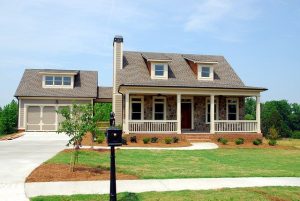
In a real estate boom, home buyers will check for almost any house that hits the market. It is excellent while it lasts, but only home buyers who choose the best space will be holding the most valuable property that also depreciates much slower rate. This difference in value is mostly a result of a residential location. Location is a familiar inquiry in real estate, as endorsed by Prestige Windsor Park Vanagaram. While it is good to start with, most people have entirely no idea what it means. In this short article, we’ll share the things you need to consider when looking for a residential space.
Check the Lot Location
 It is essential to take into consideration where the house is located. In this regard, there are things you should keep in mind as you conduct your search. Bear in mind that if the place you want to buy is right on a busy highway, you may get it for a lower price, but it will also be more difficult to sell later on. It is also the same for spaces that stand next to or back onto the commercial property, such as a grocery store or gas station, or homes on streets that get an unusual amount of parking traffic and parked cars, such as those near large churches or community centers.
It is essential to take into consideration where the house is located. In this regard, there are things you should keep in mind as you conduct your search. Bear in mind that if the place you want to buy is right on a busy highway, you may get it for a lower price, but it will also be more difficult to sell later on. It is also the same for spaces that stand next to or back onto the commercial property, such as a grocery store or gas station, or homes on streets that get an unusual amount of parking traffic and parked cars, such as those near large churches or community centers.
Asses the Neighborhood
It’s a matter of personal choice the neighbors that will appeal to you. However, a truly extraordinary neighborhood will have a few critical factors in common: accessibility, appearance, and amenities. Your area may also dictate the size of the lot on which your house is built. In terms of accessibility, you should look for a neighborhood situated near a city’s major transit routes and has more than one point of entry. The appearance of the neighborhood is also important.
Anticipate for Development
It is not just the present amenities that matter, but future ones as well. Plans for new schools, hospitals, public transportation, and other civic infrastructure can dramatically improve property values in the area. Commercial development can also improve property values. When you’re shopping for a home, try to find out whether any new public, commercial, or residential developments are planned and consider how these additions might affect the desirability of the surrounding areas.
